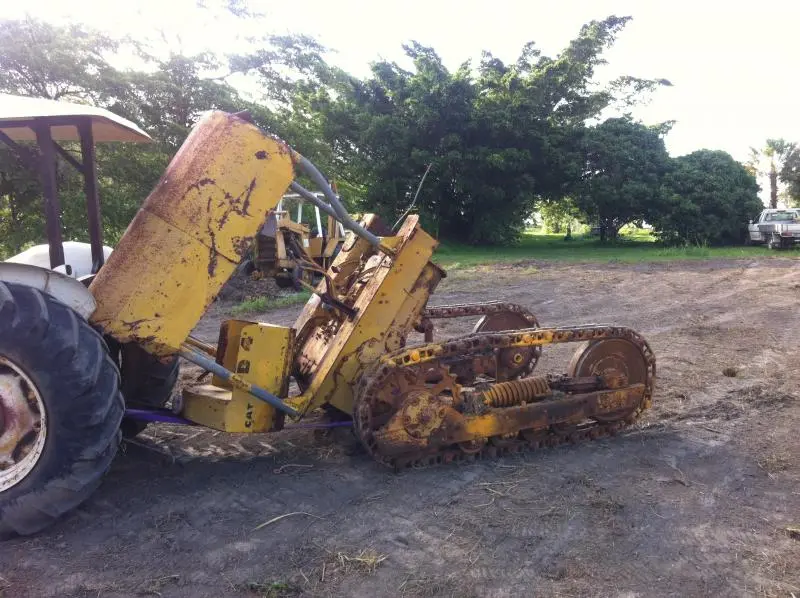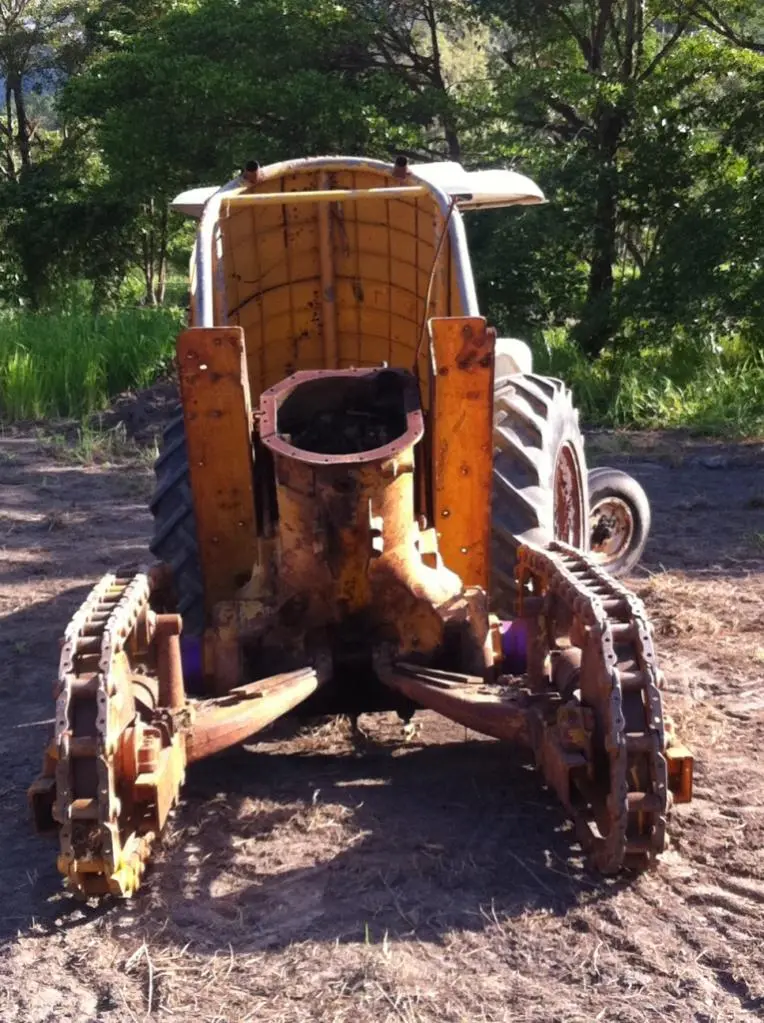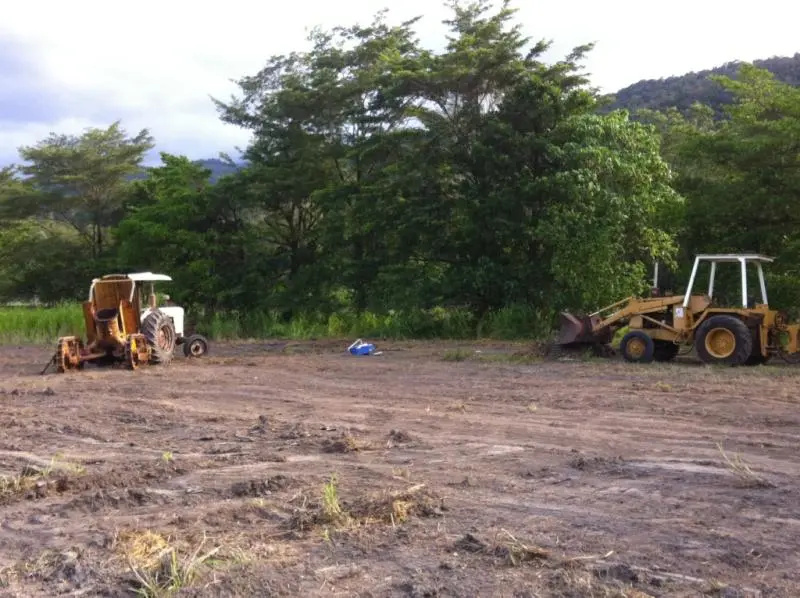


Well at least you and your mate got to share the story with us without any hurt!
You can never be too carefull and thanks for showing the near miss!
Gilbert.
Good of you to share this story Callan, don't worry, your not the only person here to make a mistake like that. I think all us on farms have a near miss most weeks just doing "normal" jobs and it is amazing more of us are not killed, like look at the number of people killed on farms riding quad bikes, it's almost one a week here in Oz isn't it, and often on flat ground. Up where you are Callan you have super high rainfall, like over 40 feet a year isn't it, plus heat, humidity and hills to deal with too, all those factors present unique challenges, and I think it's great you shared your story because it will give us all reason to pause next time in the same situation, and think it all through.
My old farming mate Gwyn, he's 83 now, for years in the 50's and 60's he used to clear scrub in the Mallee of South Australia using a D7 4T pulling a 200 foot anchor chain with his cousin Charlie driving his D4 6U at the other end of the chain, and every now and then they would hook a big stubborn tree that would quickly see the D4 pulled backwards and on the odd occasion that D4 rolled over, with no scrub canopy, how they survived is amazing isn't it, there were no 2 way radio's on those tractors, not even roofs, but many didn't survive.
Another older guy I've met recently drove Cats, D6's and D7's in the mountains here in Victoria for the Electricity Trust clearing fire breaks under the high tension power lines for 20 years, climbing over long wet slippery fallen Mountain Ash trees 60 or 70 feet long hiding in the 6 foot high undergrowth he couldn't see till the crawler took off sideways or backwards down the hill, over the 20 years he did that he rolled 6 Cats, and without breaking a bone, very lucky indeed.
It would be interesting to hear some folks tell their stories about accidents with their Cats because we can all learn something, maybe we could start another section here for filing them for others to read at a later date.
That D4 has nice sprockets Callan, are you going to put a motor on it?
regards
Mike
thanks for sharing and glad everyone is OK.
That feature of dozers - to up end like that really worries me when you consider that all that is stopping it happening is a couple of slender bolts that over time corrode and weaken. I wonder why they don't have a safety chain or some other mean of ensuring there is a back up if the spring or the retaining bolts let go?
My neighbours have fitted sliding retainers to their D4Ds that allow the track frames to rise and fall, stop them spreading their legs and stop the transmission etc from rolling back over the axle should the transverse spring let go.
Thanks again for sharing.
Thanks for sharing that mishap along with the pictures. We can all afford to be reminded to take the extra time to look things over and think them through. We have all done things that turned out to be really stupid when we looked at it in retrospect. Reminding us may prevent a future mishap.
Is that a David Brown tractor in the picture?
I still have my dad's 1967 880 selectamatic. Not many in my area of the USA. Advance tractor in it's day. Had some features not found on IH's and JD's back then.
good to hear some other peoples teeth chattering tales : )
yes mike their good sprockets, in fact the whole UC on that machine is in good nick.
it spent its life in a now abandoned copper mine, and had been sitting for 20 something years with no motor.
the gearbox oil in it was still golden yellow ! got to love the dry.
i was considering bolting the other D315 to it, but considering the mammoth undertaking i just went through with the 6U, i might have a bit of a pause and
finish off other projects round the house first.
that is a scary combination having a d7 at one end and a d4 at the other !!!!
he must have been quick on his feet to jump clear. only takes a bit of mud or a bit of oil on the boot and your buggered no matter how quick you are.
i guess somedays we kind of forget that even small machinery will still happily kill you if you disrespect it ... well hopefully not happily, i would hope the
6U would like me just a little better then that considering the time and love i put into her : )
yes inter, i agree about the fact that the machine is relying on a couple of small pins to stop it flipping., there has been talk of this in the past to keep an eye on them as they are an item that wears.
old 3t lover, yes its a DB 1200. has a few quirks that only a pommie tractor can have but built very heavy. she does what she's asked to anyway.
So what you folks are saying is to check the bolts, nuts, shackles,pins, and cotter pins that hold the equalizer spring together on say as an example a D2/3J which is what I've got. If they are original which I suspect is the case on my machine, should I just change the whole lot out to be on the safe side? This machine was an impliment puller all it's life I believe. Thanks for any suggestions. 👋
Joe Giraud
D2/3J#4103
[quote="Dozerman51"]So what you folks are saying is to check the bolts, nuts, shackles,pins, and cotter pins that hold the equalizer spring together on say as an example a D2/3J which is what I've got. If they are original which I suspect is the case on my machine, should I just change the whole lot out to be on the safe side? This machine was an impliment puller all it's life I believe. Thanks for any suggestions. 👋
Joe Giraud
D2/3J#4103[/quote]
It is a good idea to check those parts because often they are badly worn, particularly the pins, and in the case of a couple of my old Cats, that smaller spring and it's shackles is completely missing from the larger equalizer spring, and that is very dangerous if the motor is not secured to the track frames. Most those parts are still available, though the prices might give you a little surprise!:jaw:
regards
Mike
Looking at the D2 and D4, there are a couple of areas of potential weakness in the transverse spring assmebly that could lead to tipping back and over under heavy load, eg., winching up a slope.
Under extreme load and with years of fatigue, the main spring could actually break in half - possible but probably unlikely as the leafs are quite heavy. Snapping in half would allow the ends to slip out of locators on each track frame.
Alternatively, the inner vertical bolts securing the spring assembly to the sump casting could strip or shear allowing the engine etc to pull away from the spring assembly. One bolt failure would probably be enough to allow the whole assembly to dislocate from the track frame locators.
More likely is that the end shoes that sit above the spring ends will wear out and shear off - either through the middle of the shoe itself or by shearing off the horizontal locating bolts. Only one end would need to go which would allow the whole spring unit to dislocate.
One of my spare spring units has also been welded in the section that holds the sping pack together and from which the engine locating bolt is fixed. Clearly this 'frame' has split apart in the past which would allow the engine to dislocate from the spring assembly, as per above.
Overall, I think I will be fitting a safety chain of some sort each side between the engine/transmission and the track frame toward the front of the machine. importantrly, having a blade on wont help as this connects to the track frame, and having a big winch or rippers on the back probably makes it worse.
I clearly remember when I removed the transverse spring and then removed the engine (as per the book) the whole transmission and back end and winch assembly slowly and gracefully rose up and tipped back over itself - just like in the photos above. Fortunately, it did no damage other than chip the shed floor but my son and I looked at each other each thinking what the #@*% happened then - we did not see that one coming at all! Imagine if one of us had been under there:jaw: